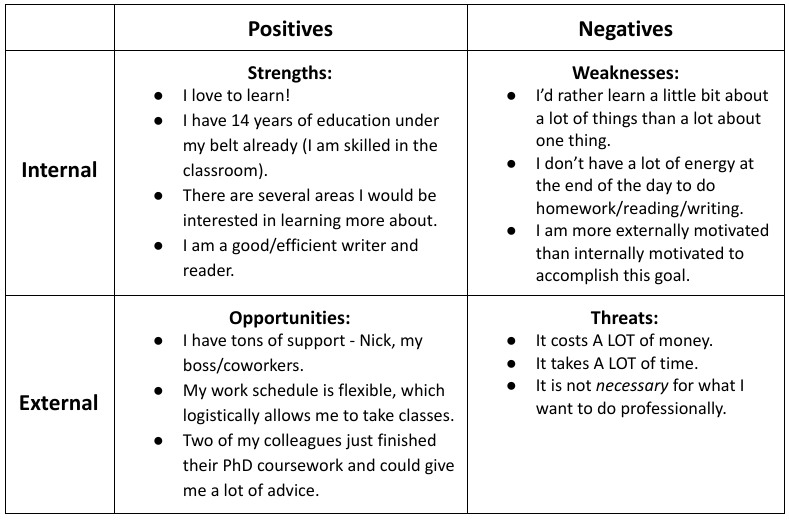I’ve casually decided that the theme of my 30s will be learning how to be more present, and more mindful.
Why, you ask?
Perhaps it’s because I had twins – and that’s all I plan to have – so I am fully aware that every new phase they enter, for better or worse, will be the last time I experience it. This makes me want to savor every moment.
Or perhaps it’s because I spent my 20s so focused on moving onward and upward in terms of my education, career, getting married, starting a family…and now that the dust has settled on all those major life milestones, I am able to relax and ask myself, what the heck do I want next?
Or perhaps it’s just because mindfulness is all the rage these days. With a constant news cycle, social media, politics, and blah blah blah…it’s becoming more and more appealing to turn off every once in a while.
So I had to ask myself, how could mindfulness relate to effectively setting, achieving, and failing at our goals? I set out to do some research and discovered the nine essential qualities of mindfulness:
- Focus on the present moment. When it comes to goals, a great place to start may be thinking about your current situation. An activity I like to use to do this is called “Stop, Start, Continue”; in other words, consider your current state and ask: what is one thing I’d like to stop doing, start doing, and one thing I want to make sure I continue doing?
- Be fully present. How aware are you of your environment, and your own self-awareness? Do you truly pay attention to the things you do every day, or have some things become routine, and perhaps even thoughtless?
- Be open to experience. Try to be curious about any ideas, fears, or experiences you have rather than shutting them down.
- Use non-judgement. This is certainly hard for me, but try not to categorize your ideas into “good” or “bad”, and accept your successes – and failures – in a non-judgmental way.
- Accept things as they are. This one is all about accepting reality rather than trying to change things into the way you think they should be; the ultimate goal of this is to teach you that you can tolerate anything that comes up.
- Get connected. Consider the people and things you are grateful for, and the ways in which you and your goals are connected to something bigger than you.
- Use non-attachment. Try not to hold on too tight to things and people from the past; instead, consider life, and your goals, to be in a state of constant flow.
- Look for peace and equanimity. Maintaining an even-keel will help you when things don’t go your way; if this happens, stay rooted in your own clear vision and values and keep moving forward.
- Use compassion. This goes for others, and for yourself! Have empathy on your good days and your bad days, and your goals will follow.
Some of this may resonate with you, some of it may not. And I’ll be perfectly honest, I definitely do not adhere to all of these ideals, all the time.
The bottom line is, for someone like me who is constantly thinking, reflecting, and asking questions, taking a moment to be fully present is a welcomed challenge.
The origins of mindfulness practice date back thousands of years, to the beginnings of Hinduism and Buddhism, and perhaps even further back than that. But Western audiences took milennia to catch on, and we are still a long time away from it being a fully accepted part of our culture.
So for us Western folk, perhaps the sage Ferris Bueller said it best all the way back in the mid-80s, just before I was born:
It may have taken me 32 years to agree with him, but better late than never!
And on that note, I’ll leave you with this:
How might being more mindful impact your goals?
